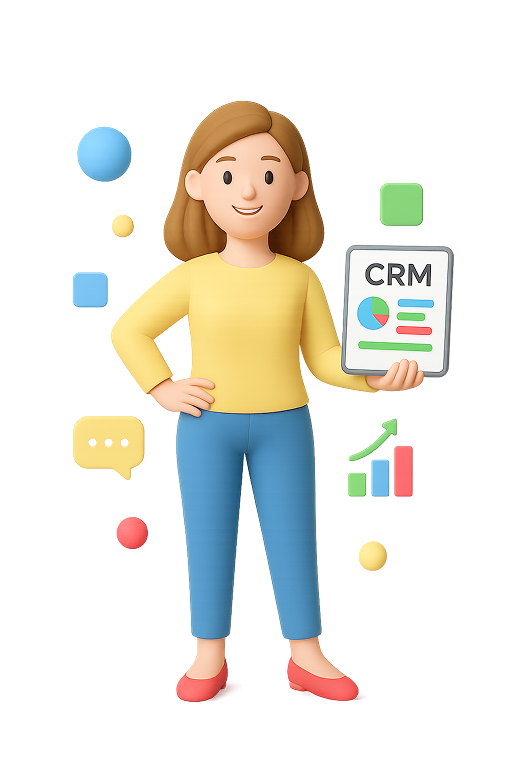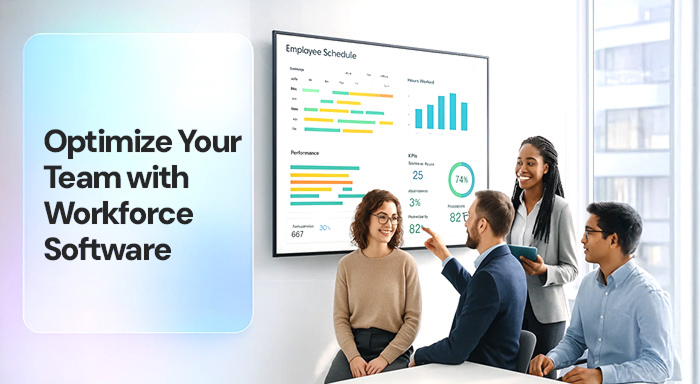Every organization has to plan its workforce management in the most effective way possible. Proper staffing means making sure the right number of people are there when you need them, which directly leads to efficient working and ultimately to lower costs.
A comprehensive approach to managing and optimizing staffing is Workforce management software. We'll examine how companies can use this tool to their advantage in this post.
Understanding Workforce Management Software
Workforce management software is an application that operates on a computer to simplify managing employees. It takes care of mundane tasks such as generating work timetables, recording time, and monitoring attendance. Managers adore it since it saves time, reduces errors, and simplifies everything just a bit.
Rather than using spreadsheets or paper entries, this software integrates it all into one system—so you can track schedules, work hours, and even employee performance, all from one location. It's an intelligent way to remain organized.
Why Use Workforce Management Software?
The primary advantage of using workforce management software is to become more efficient. Automation of scheduling can be used to cover shifts effectively to prevent understaffing or overstaffing. This leads to enhanced service delivery and higher employee satisfaction.
The software also provides insights with data analytics. This enables managers to view attendance, performance trends, and makes them more informed in making decisions. Workforce requirements planning, using past data assists in planning and avoids last-minute scrambles.
Enhancing Employee Engagement

One of the key aspects of a well-managed workforce is better employee morale. Workforce management software has flexible scheduling options created to meet the demands of individuals. It fosters a sense of accountability and independence in workers and facilitates shift switching and leave requests.
Transparency in scheduling fosters trust. Employees feel more like a part of the company when they have access to their schedules and knowledge of the decision-making process. This relationship, in turn, leads to increased loyalty and lower turnover.
Reduction in Costs and Redirection of Resources
Staffing accordingly affects the net profit directly. To eliminate unnecessary labor costs, organizations can optimize schedules. It assists in keeping track of peak hours and enables proper allocation of resources, allowing labor expenses to directly match business requirements.
The software offers a complete view of how the workforce is being used. With this information, managers can assign resources in a manner that utilizes their department to its fullest capacity. This approach reduces excess and increases productivity while maintaining quality standards.
Compliance and Risk Management
One of the key aspects of workforce management is compliance with labor laws and regulations. The software assists in the maintenance of compliance by monitoring hours worked, ensuring that workers are provided with accurate breaks, and tracking overtime. As stipulated by the U.S. Department of Labor, accurate record-keeping of employee working hours is critical in ensuring Fair Labor Standards Act compliance.
Automated alerts allow managers to deal with potential issues before they become problems, and they can cost you significant legal risk. Correct record-keeping also helps in audit preparedness. Having clear and concise records of employee schedules and hours worked gives organizations peace of mind when conducting an audit.
Implementing Workforce Management Software
Shifting to workforce management software should be well-planned and organized. You need to note down the organizational needs and pick a tool based on that. The training of the managers and the employees is crucial so that they can work on the system comfortably.
Another thing to take into account is integration with existing systems. The software must integrate smoothly with payroll and HR systems, as such integration provides a shared platform to manage the employee data. It minimizes duplication and improves the efficiency of business operations.
Track Your Improvements and Learn from Them
After implementation, it becomes necessary to check for the working of the software. Periodic checks on the metrics give feedback on areas that need to be enhanced and assist the tool to stay connected to the goals of the organization. Reviews by managers and employees provide insight into user experience and the levels of satisfaction.
Emphasize ongoing improvements. The program can also be upgraded or changed in the long run as business requirements evolve. Staying abreast of workforce management technology trends keeps organizations competitive and effective while responding to market needs.
Conclusion
Workforce management software makes smarter staffing possible, leading to everything from increased efficiency to enhanced employee experience. By executing repetitive task automation and delivering diagnostic or predictive information, the software empowers companies to make informed decisions based on data in alignment with their strategic objectives. By implementing the software continuously and reviewing it from time to time, companies are ensuring ongoing satisfaction of evolving needs, setting them up for long-term success.
Related Posts:
Maximize Your Workforce Potential with ADP Learning Management System: 11 Pro Tips!




%201.png)

%201.png)

%201.png)

